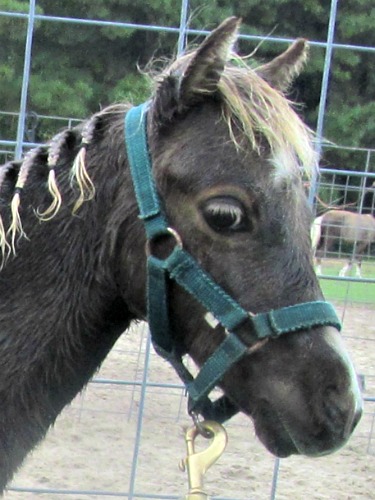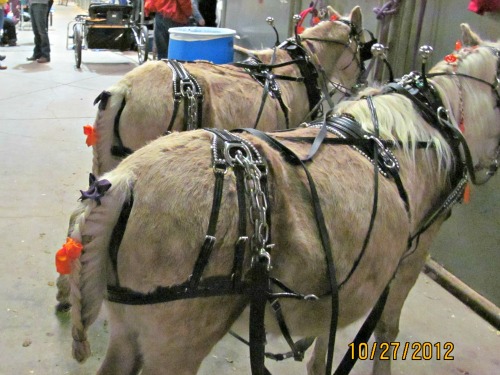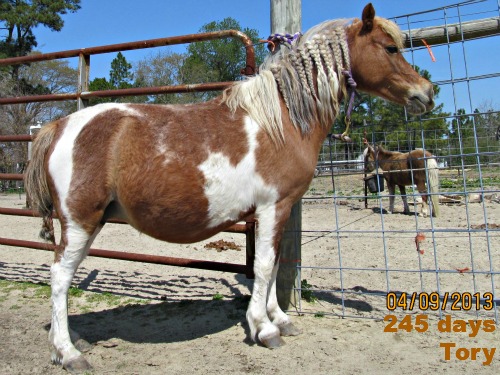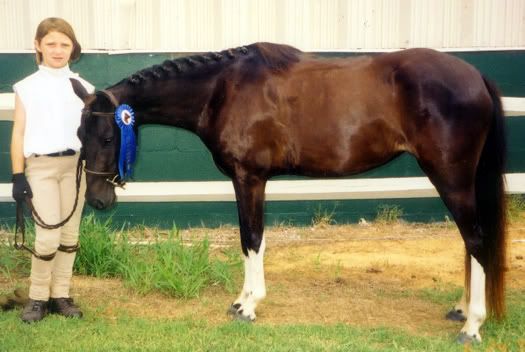Ditto what Max's Mom and Marsha said as to training and learning.
There are several books and videos out that show how to teach a horse to lay down. Some minis do very well learning lots of tricks - usually there are others you do before actually laying down (at least the way I was taught) and then you build on that until you get the lay down.
Brushes - I always go back to old standards. I love a good rubber curry comb used counter clock wise to work hair loose, a stiff brush (for some reason - these are really hard to find these days) to brush the lifted dirt/hair off and a soft brush to finish. For the legs & head, I use the "gloves" from the bath department of Wal-Mart and then a soft brush. My guys LOVE their "scrubbies" when they are hot/sweaty after working in hand or driving. For bathing, we often use the hand held "poof scrubbies"...


I prefer a human hair brush w/ medium soft bristles for manes/tails and to work out the inevitable witches knots I use either a hoof pick or the hooked end of pulling comb along with Cowboy Magic, Olive Oil, WD-40 or products from the Ethnic section of a drug store (Wal-Mart).
And the all important hoof pick - go to a horse store (if you have them?) - and hold several different types to see how they feel in your hand. Let the cashier/store owner know you are learning - and have them show you how to hold it to use it (different than picking it up!) If you are lucky - a trainer, knowledgeable owner or a farrier will be there when you are there and they'll show you with their invisible co-hort (the horse) how to pick up a leg and clean that hoof. Have the breeder you are buying from show you the techniques they use and allow you to get comfortable using them. NEXT BEST choice is safety and handling by Cherry Hill - LOADS of pictures.
Susan Harris's - "Grooming to Win" covers a LOT of grooming info including different styles of trimming manes/tails for specific breeds and several kinds of braiding.
Braiding - O YAY!! Who says you have to show to braid? There are all kinds of braiding out there. You can use braiding to keep hair from getting caught in mud/briars or you can use it to be pretty. Theres some for tails and some for manes. There's the Saddle type braiding w/ ribbon (not left in on pasture) and there's Continental braiding that looks like a lattice when finished. There's the draft style of braiding (a pseudo french braid) and actual french braiding (not left in when un-attended - especially the tail). We've started braiding on our young foals to train their manes and tails to lay down. Next week when we take 4 boys in to be castrated - their tails will be done in a single long braid and the longer tails will then be fed thru at the top of the braid and "taped" so they don't get into any drainage or the Vaseline we use on insides of hind legs while the boys heal. We've braided manes, forelocks and tails for hunter showing and we've done the braided manes for "draft style" for a show when driving to a wagon or parades.


the day before she foaled. Kept her tail out of the way of birthing (on pasture) and I used to do all the manes during the winter - re-doing the braids every 4 weeks or so or when the braids said they needed it.
Our attempt at show braiding - to be "perfect" the braids needed to be smaller, shorter and the tail also should have been done. BUT it was enough. Vixen is a 1/2 shetland that we bred and raised and 2 of our daughters spent many hours riding her and she was an awesome lesson pony. Still is - at a hunter/jumper barn...
Grooming can be done daily - to check the condition of your horses and to learn the ways/wiles of your new partners. Or as little as once a week. Our pastured ponies often get no more than 1x every 8 weeks - where we knock off the dust, trim and comb out manes and tails - on their "pedicure" days.
















































